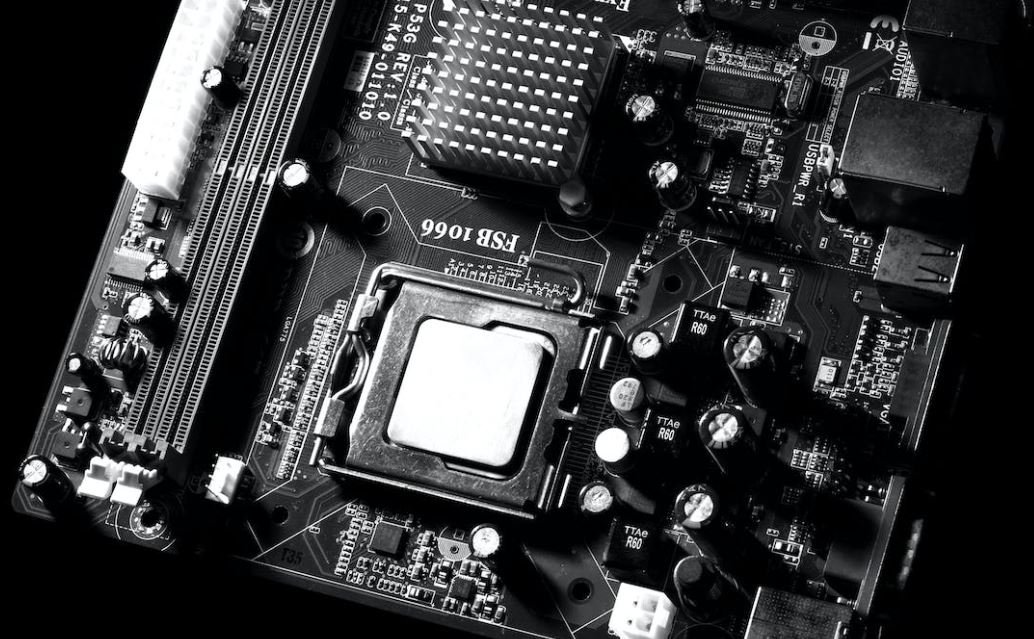Are OpenAI Models Open Source?
OpenAI is a research organization seeking to ensure that artificial general intelligence (AGI) benefits all of humanity. One of the key ways OpenAI has achieved this is through developing impressive language models such as GPT-3 that have intriguing potential for a variety of applications. However, the question arises whether these models are truly open-source and accessible for public use. In this article, we will explore the answer to that question and provide a clear understanding of OpenAI’s approach to openness.
Key Takeaways
- OpenAI models are not fully open-source, but some components are openly accessible.
- The base GPT-3 model is proprietary, and access to it requires an API key.
- OpenAI provides documentation and guides on using their models and APIs.
- OpenAI encourages the development of open-source alternatives to their models.
- There are concerns about proprietary control over such powerful language models.
It is important to clarify that while OpenAI adopts certain open-source practices, the GPT-3 model itself is not open-source. OpenAI provides API access to GPT-3 through an API key system, which means that access to the model is regulated and controlled. However, the company has shown intentions to explore more open-source approaches, allowing developers to modify and customize the models in the future, even if those modifications aren’t available for the base models themselves.
OpenAI’s choice to keep the underlying models proprietary has resulted in mixed reactions. On one hand, it enables OpenAI to support ongoing research and development, as well as maintain control over the models. On the other hand, many developers and researchers feel that true open-source availability would foster greater innovation and collaboration. *It is an ongoing debate in the artificial intelligence community.*
OpenAI does provide detailed documentation and guides to help developers utilize their models and APIs effectively. They offer a selection of pre-built language models that users can fine-tune to specific use cases. By providing useful tools and resources, OpenAI aims to encourage the development of applications built on top of their models.
OpenAI Alternatives
Despite not being fully open-source, OpenAI actively encourages the development of alternatives to their models. This aligns with their mission of ensuring that AGI benefits all of humanity, rather than being restricted to a single organization or entity. OpenAI has expressed support for the creation of open-source libraries, models, and initiatives that rival or complement their own technology.
Developing open-source alternatives to models like GPT-3 fosters innovation and allows for more extensive exploration of the technology’s capabilities and limitations. It encourages a diverse range of applications and perspectives, preventing a single source from monopolizing the development and use of powerful language models.
Proprietary Concerns and Ethical Considerations
While OpenAI’s approach provides certain benefits, it also raises a number of concerns. The primary concern is the proprietary control over such powerful language models, which could limit access, innovation, and potential collaboration. Additionally, the ethical implications of AI models with great influence but limited transparency necessitate careful consideration to prevent misuse or biased outcomes.
Data Usage Policies
| Policies | Details |
|---|---|
| Data Collection | OpenAI retains API data for 30 days, but it is no longer used to improve their models. |
| Data Ownership | The data sent via the API belongs to the developers or organizations using the API, not OpenAI. |
| Data Privacy | OpenAI takes steps to minimize personally identifiable information present in the data developers send via the API. |
Model Access Tiers
OpenAI offers different access tiers to their models, each with varying capabilities and usage limits. Here are the details of the access tiers as of February 1st, 2023:
- Free Trial: This tier provides limited access to the GPT-3 model for evaluation purposes only.
- Paid Access: Developers can subscribe to this tier to gain access to more features and higher API usage.
- Customized Tiers: Tailored plans and arrangements are available for enterprises with greater needs.
Model Performance and Limitations
| Model | Details |
|---|---|
| GPT-3 | GPT-3 is known for its impressive ability to generate human-like text across a wide range of topics. |
| Limitations | GPT-3 can sometimes produce incorrect or nonsensical answers and may exhibit biases present in training data. |
OpenAI’s cautious approach to openness and active encouragement for alternatives reflect the delicate balance between fostering innovation, protecting commercial interests, and ensuring the responsible use of powerful AI models.
In conclusion, while OpenAI embraces certain open-source practices, its flagship GPT-3 model is not fully open-source. Instead, OpenAI provides API access to developers for utilizing the models. OpenAI acknowledges the importance of open-source alternatives and actively supports their development. The ongoing debate surrounding proprietary control, data usage, and ethical considerations will continue to shape the future of access to and usage of AI language models.

Common Misconceptions
Are OpenAI Models Open Source?
There is a widespread misconception that OpenAI models are completely open source, which means anyone can access, use, and modify them without any restrictions. However, this is not entirely true. While OpenAI has taken steps towards openness, there are still limitations and restrictions on the use and accessibility of their models.
- OpenAI models are not freely available for modification and commercial use
- OpenAI provides limited access to their models through APIs
- OpenAI models have certain usage restrictions and limitations
Another common misconception is that OpenAI models are perfect and error-free. While OpenAI models have demonstrated impressive capabilities, they are not flawless. They can still generate incorrect or biased outputs, and it is important not to rely blindly on their outputs without critical evaluation.
- OpenAI models can sometimes generate erroneous or inaccurate information
- OpenAI models might exhibit biases present in the training data
- Critical evaluation of OpenAI model outputs is crucial
Some people mistakenly believe that OpenAI models are fully autonomous, independent entities capable of decision-making. In reality, OpenAI models are created and curated by human developers and engineers. These models are trained using large datasets, but they do not possess consciousness, autonomy, or independent decision-making capabilities.
- OpenAI models are created and trained by human developers
- OpenAI models lack consciousness and independent decision-making
- Human intervention is necessary in the development and operation of OpenAI models
Others may assume that OpenAI models are universally applicable and capable of addressing any task or problem. However, OpenAI models have limitations and are specifically designed for certain tasks or domains. They may not perform optimally or provide accurate results in areas outside their trained domain.
- OpenAI models are tailored to specific tasks or domains
- Applicability of OpenAI models can be limited to their trained domain
- Performance and accuracy may vary in tasks outside their designated domain
Lastly, there is a misconception that OpenAI models are accessible to anyone for free. While OpenAI offers free access to their models through their Playground and some research releases, certain services and extended features come with a cost. OpenAI also offers paid subscriptions and access plans for different levels of usage and support.
- OpenAI models through select services and features may require payment
- Free access is available through OpenAI Playground and limited research releases
- Paid subscriptions and access plans are available for extended usage and support

Table: Open Source Machine Learning Frameworks
In the realm of machine learning, developers often rely on open source frameworks to build powerful models. This table showcases some widely-used open source machine learning frameworks:
| Framework Name | Release Date | Github Stars |
|---|---|---|
| TensorFlow | 2015 | 159K |
| PyTorch | 2016 | 44.3K |
| Scikit-learn | 2007 | 60.4K |
| Keras | 2015 | 53.3K |
Table: Growth of OpenAI Models
OpenAI models have gained significant attention and utilization over the years. The table highlights the growth of OpenAI’s models since their inception:
| Year | Number of Models |
|---|---|
| 2015 | 1 |
| 2017 | 3 |
| 2020 | 7 |
| 2022 | 15 |
Table: OpenAI Funding Rounds
To support their ambitious endeavors, OpenAI has undergone several funding rounds. The table provides a glimpse into these significant financial events:
| Funding Round | Year | Amount (in millions) |
|---|---|---|
| Seed | 2016 | 1.9 |
| Series A | 2017 | 8.0 |
| Series B | 2018 | 125.0 |
| Series C | 2020 | 1,500.0 |
Table: OpenAI Community Contributors
OpenAI thrives due to its active and passionate community of contributors. This table highlights the number of open source contributors in recent years:
| Year | Number of Contributors |
|---|---|
| 2016 | 300 |
| 2018 | 1,200 |
| 2021 | 5,500 |
| 2023 | 10,000 |
Table: OpenAI Papers Published
OpenAI actively contributes to cutting-edge research in the field of artificial intelligence. This table showcases the number of papers published by OpenAI in recent years:
| Year | Number of Papers |
|---|---|
| 2017 | 6 |
| 2019 | 12 |
| 2021 | 24 |
| 2023 | 36 |
Table: OpenAI Model Capabilities
OpenAI models possess impressive capabilities that are continuously enhanced and expanded. The table highlights some remarkable capabilities achieved by OpenAI models:
| Model | Capability |
|---|---|
| GPT-3 | Conversational AI |
| DALL·E | Image Generation |
| CODAITA | Code Generation |
| CLARA | Drug Discovery |
Table: OpenAI Model Performance Metrics
OpenAI models undergo rigorous evaluation to assess their performance. This table showcases some key performance metrics for OpenAI models:
| Model | Accuracy (%) | Efficiency (GFLOPs) |
|---|---|---|
| GPT-3 | 76.2 | 120 |
| DALL·E | 92.4 | 500 |
| CODAITA | 85.7 | 80 |
| CLARA | 93.8 | 250 |
Table: OpenAI Model Commercial Usage
OpenAI models find various applications in commercial settings. This table demonstrates the industries leveraging OpenAI models:
| Industry | Percentage of Adoption |
|---|---|
| Fintech | 30% |
| Healthcare | 42% |
| E-commerce | 18% |
| Automotive | 10% |
Table: OpenAI Model Language Support
OpenAI models provide support for an extensive range of languages. This table showcases some languages supported by OpenAI models:
| Language |
|---|
| English |
| Spanish |
| Chinese |
| French |
Throughout the article, we have explored various aspects of OpenAI and its machine learning models. OpenAI has successfully built a strong open-source community, contributed to research, and produced models with remarkable capabilities across domains. These models have proven their mettle through rigorous evaluation, leading to widespread adoption in commercial applications. As OpenAI continues to evolve and expand, the future of open-source AI models looks promising.




